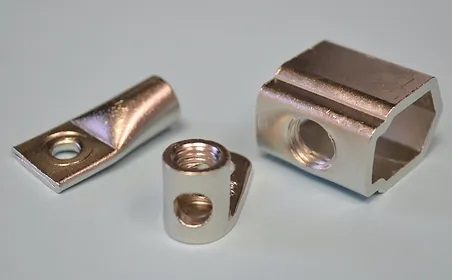At Alternate Finishing, Inc. we offer two approaches to our nickel plating service: Electroless and electrolytic.
The electroless process employs a chemical reduction technique wherein nickel ions in a solution are reduced and deposited onto a substrate without the need for an external power source. This procedure offers great uniformity and coverage, even on complex geometries, which is ideal for so many applications.
In electrolytic nickel plating, we use an electric current to drive the deposition of nickel ions from a solution onto a substrate. This method gives better control over the deposition rate and yields thicker coatings.
We can apply nickel plating that meets these specifications:
- QQ-N-290
- ASTM B689
- AMS 2403
- AMS 2424
- MIL-P-27418
Request a Quote

Why Electroless Nickel Plating?
The primary objective of this possess in electronics is to apply a protective coating against corrosion and wear. The nickel layer functions as a barrier that does not allow the diffusion of underlying metals like copper into other layers such as gold.
Nickel plating provides better surface electrical conduction and contact resistance, which ensures a reliable electrical performance. It also improves the mechanical characteristics of the substrate, so no physical deformation due to repeated use acts on it.
Electroless plating provides uniform coverage and is the preferred option for high-stress and harsh environments such as industrial machinery and aerospace equipment.
Our electrolytic nickel plating service is a good choice when uniform coverage is not a vital concern, or when aesthetics are more important. Electrolytic plating is usually less expensive and sufficient for low-stress applications.
Electroless Nickel Plating Applications
At Alternate Finishing, we use electroless plating for various applications, including:
- Improving corrosion resistance and electrical conductivity in connectors and contact surfaces.
- Protecting PCB circuit board traces from oxidation and improving their solderability.
- Providing a durable and corrosion-resistant finish for electronic metal enclosures.
- Making semiconductors more reliable by protecting them against environmental degradation.